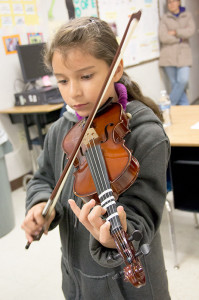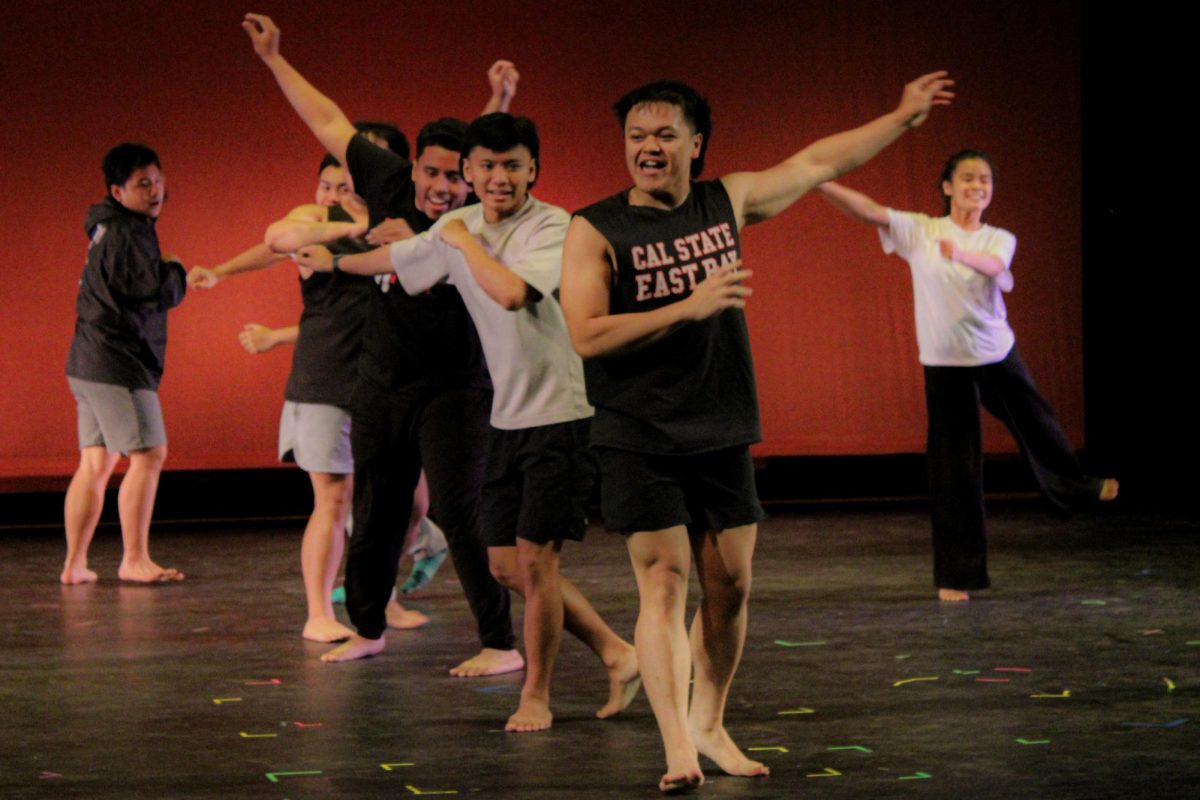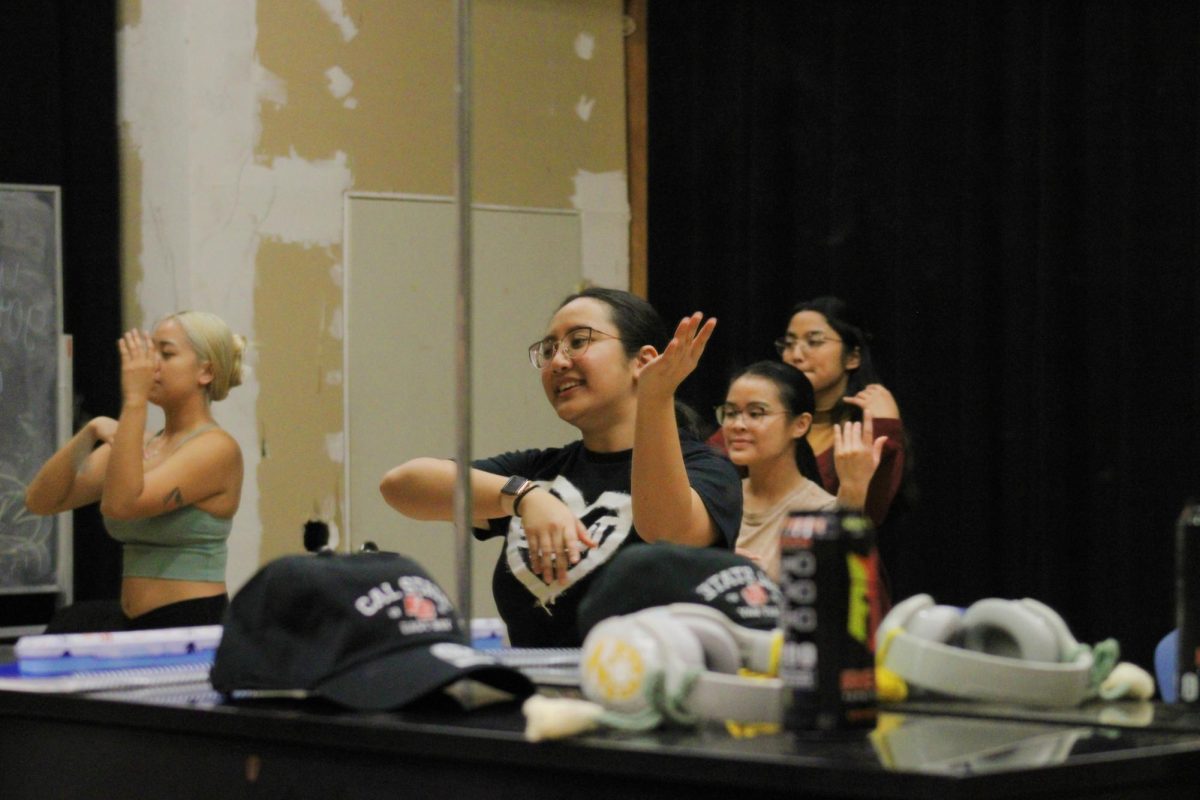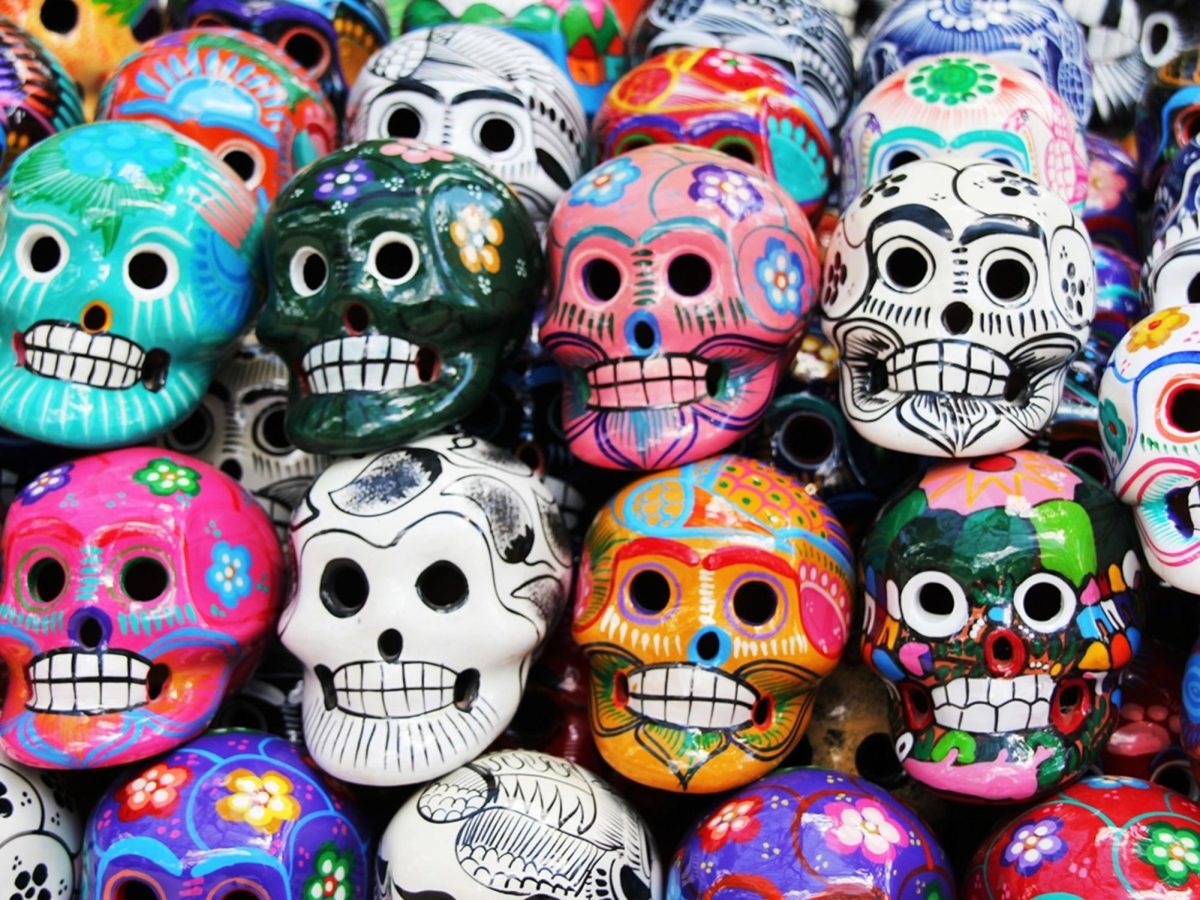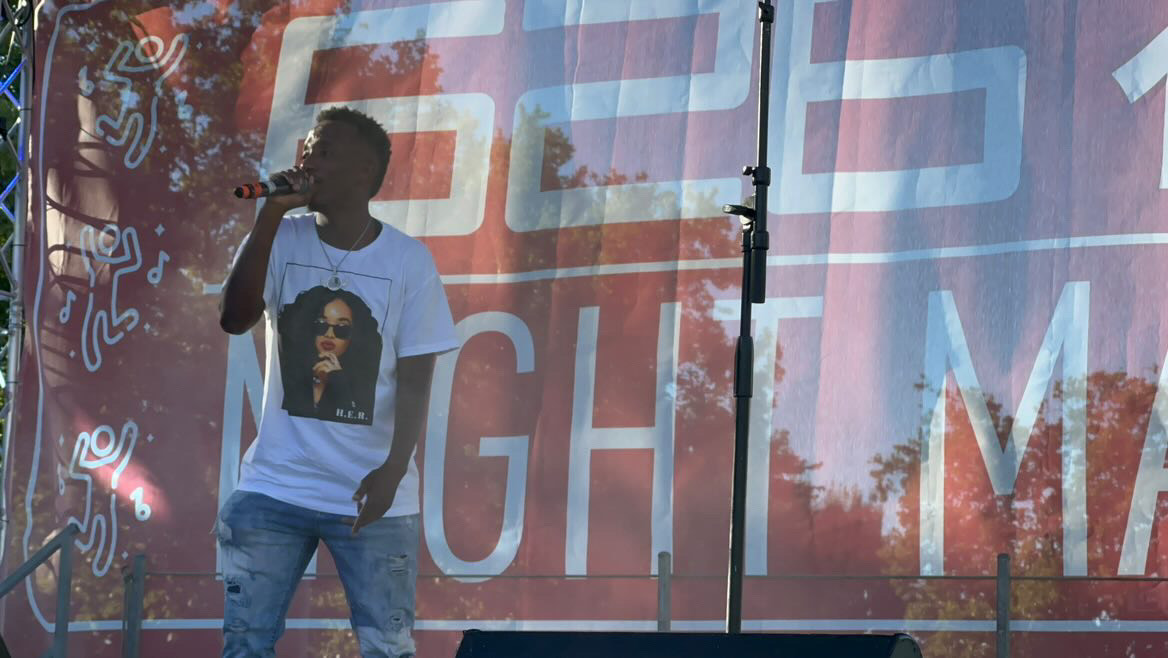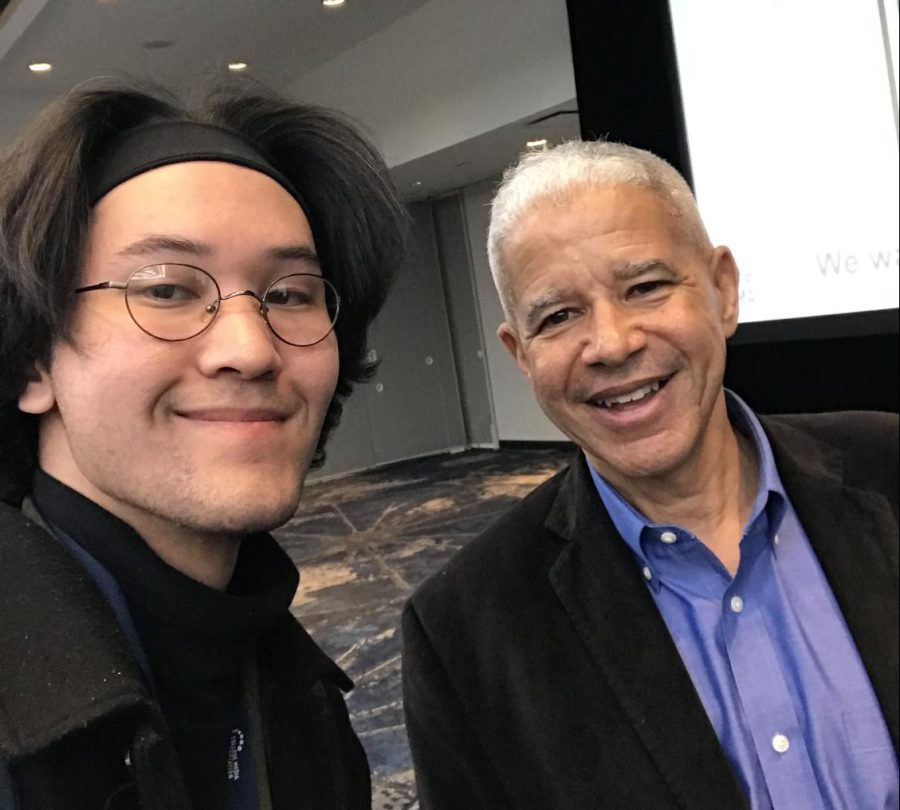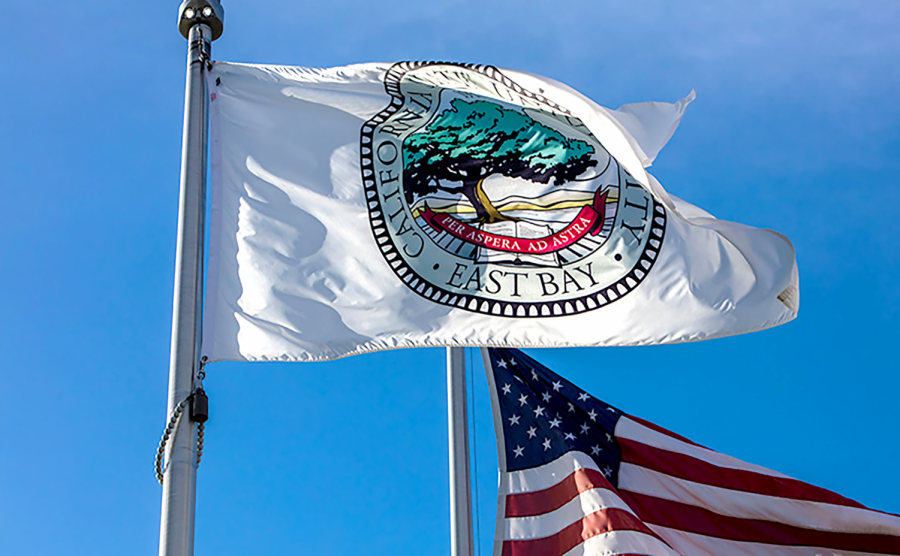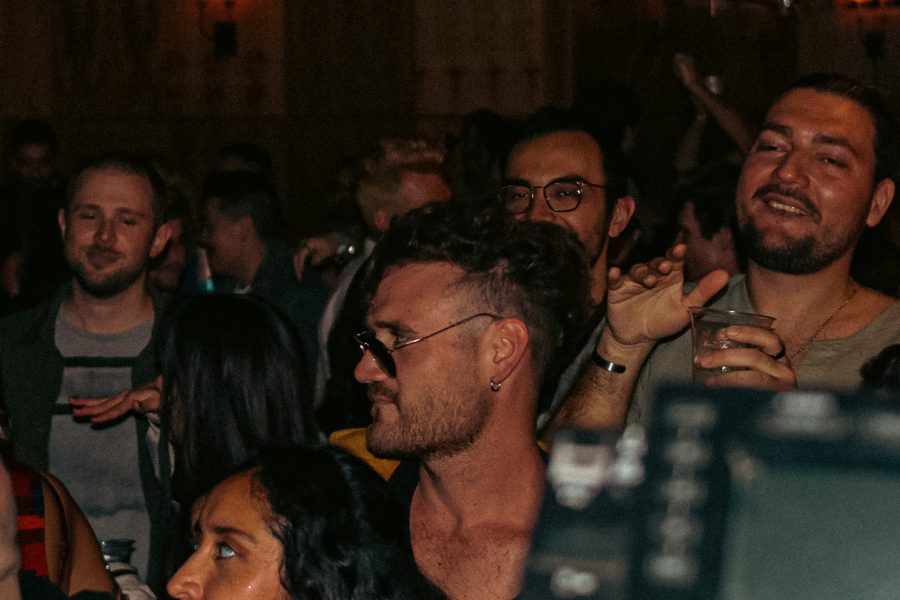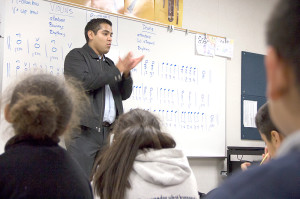
class rhythm theory.
In a classroom, roughly 40 students sit in silence with their eyes fixed on the instructor ahead. Felipe Garcia, the student’s music director, begins the music count and the class claps along with the notes on the board. Today’s music lesson is rhythmic theory.
This is a typical Tuesday night for the young musicians of Mariachi Juvenil de Hayward, an after-school program that educates East Bay youth about mariachi music and instructs them on how to play the instruments. The program encourages students, primarily of low-income families, to continue their education and to attend college, says Araceli Varela, administrative director for the group.
The mariachi classes not only teach music and discipline, they educate students about the Mexican culture. The program boosts students’ confidence, keeps them out of trouble and gives them an opportunity to learn Mariachi, a Mexican folk-style of music, Varela says. She describes it as a vehicle to help students succeed in reaching their goals.
“We want to help where we can,” Varela says.
The program is open to anyone under 18, and most of the students do not speak Spanish. The program helps students become bilingual through learning Mexican songs, Varela says.
Although the concept for these mariachi music classes began in 1996, Varela says the youth Mariachi first became a nonprofit in 2012 when it started under Mariachi Education for Tradition and Advancement, also known as M.E.T.A., which in Spanish translates to “goal.”
“We decided we needed to move forward, or further, with the program,” Varela says about transforming the music classes into a nonprofit. “We decided we didn’t just want to teach students Mariachi music. More importantly we wanted them to go to college.”
U.S. Census data for 2010 cites that roughly 40.7 percent of people in Hayward are of Latino descent. Since 2000, there has been a 22.7 percent increase in the city.
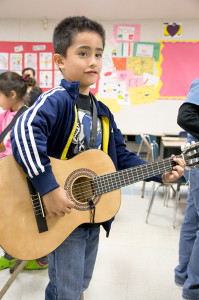
“In California, 16 percent of Latino adults from the age of 25 to 64 have earned an associates degree or higher, compared to 39 percent of all adults,” according to Excelencia in Education, a research organization dedicated to Latino student success in higher education.
Last year, the Mariachi Juvenil provided a $500 grant for the first high school student who graduated within the Mariachi program.
The nonprofit will provide another grant this year to a student graduating high school and looking to attend college, Varela says.
Eventually, the program aims to provide a $1,000 grant for a high school graduate who wants to attend college. As of right now, they have one grant, but are trying to raise more funds to provide students with financial help. Varela added many students would be the first in their family to attend college.
“[Approximately] 75 to 80 percent would be first generation to go to college,” Varela says. “Most of the parents are from Mexico and a lot of them don’t speak English. A lot of them didn’t go into higher education; they didn’t have the chance to.”
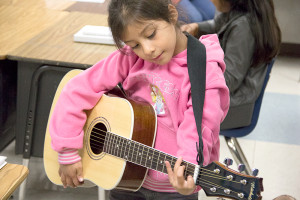 The day’s lesson is over and the novice students disperse into groups by instrument and head to different classrooms around Harder Elementary School’s campus in Hayward.
The day’s lesson is over and the novice students disperse into groups by instrument and head to different classrooms around Harder Elementary School’s campus in Hayward.
The young musicians range in age from seven to 18, with some students who are barely big enough to hold their instrument.
Most are of a Latino background, however a Filipino student has previously participated in the organization.
The program offers five different classes including vocalization, trumpet, guitarón, a large deep-bodies 6-string Mexican guitar, violin and in the “armonia” instrument, which is a traditional string instrument similar to the five-string vihuela, Garcia says.
“It means a lot, because that’s where I started,” Garcia says about youth programs. “And I feel honored to give the same opportunity to other kids.”
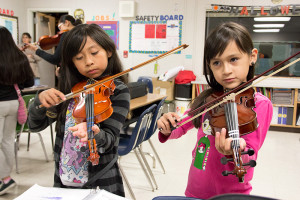 Garcia started in a San Jose music program, similar to the Mariachi Juvenil de Hayward, when he was in the sixth grade, and says that is why he wanted to help out with the program. His instrument is the violin, which he has played for 18 years.
Garcia started in a San Jose music program, similar to the Mariachi Juvenil de Hayward, when he was in the sixth grade, and says that is why he wanted to help out with the program. His instrument is the violin, which he has played for 18 years.
“I think the program teaches them lifelong experiences and lifelong lessons that will benefit them,” Garcia says, and he believes it builds discipline and patience in the young students.
The band has nearly doubled in size within a couple of months. The season started in September with roughly 35 students and has increased to 62 students, according to Maria Loza, treasurer of the program.
The program helps students with time management and now assists them with their homework. Mariachi Juvenil de Hayward started a tutoring program this season, which is offered before and after music classes. Tuesday was the last day to register for classes, Loza says.
The tuition is $40 per month and goes directly back into the program.
Students attend the classes from all over the East Bay, including Hayward, San Leandro, Union City, Fremont, and Pleasanton, but Varela says a majority come from Oakland.
“We hope to reach other places as well,” Varela says. “I know that we would like to reach out to San Ramon, Dublin.”
Yet Varela worries that Hayward residents are still unfamiliar with the program, despite the program being located there.
“For any parent and I include myself as well, to have your kid play mariachi is pride, there’s a sense of pride that comes with that,” Varela says.
For the kids, it helps them gain confidence, says Samuel Martinez, a vihuela and guitar player who has participated in the program for two years.
“I like playing guitar,” Martinez says. “I like playing and I wanted to expand my interests. Music has always been a part of my life because it is traditional and I lived around it.” Martinez’ says his uncle used to play mariachi music.
Varela says the program means a lot to the parents. Most of the parents wait and watch their children learn music techniques.
“Mariachi music to Mexico means a lot of things, it’s almost patriotic,” Varela says with pride. “To them, a mariachi player in their traje (a three-piece traditional suit) is almost like looking at the flag of Mexico.
“It represents respect, but it also represents our ancestors and a lot of emotional things go behind it.”






